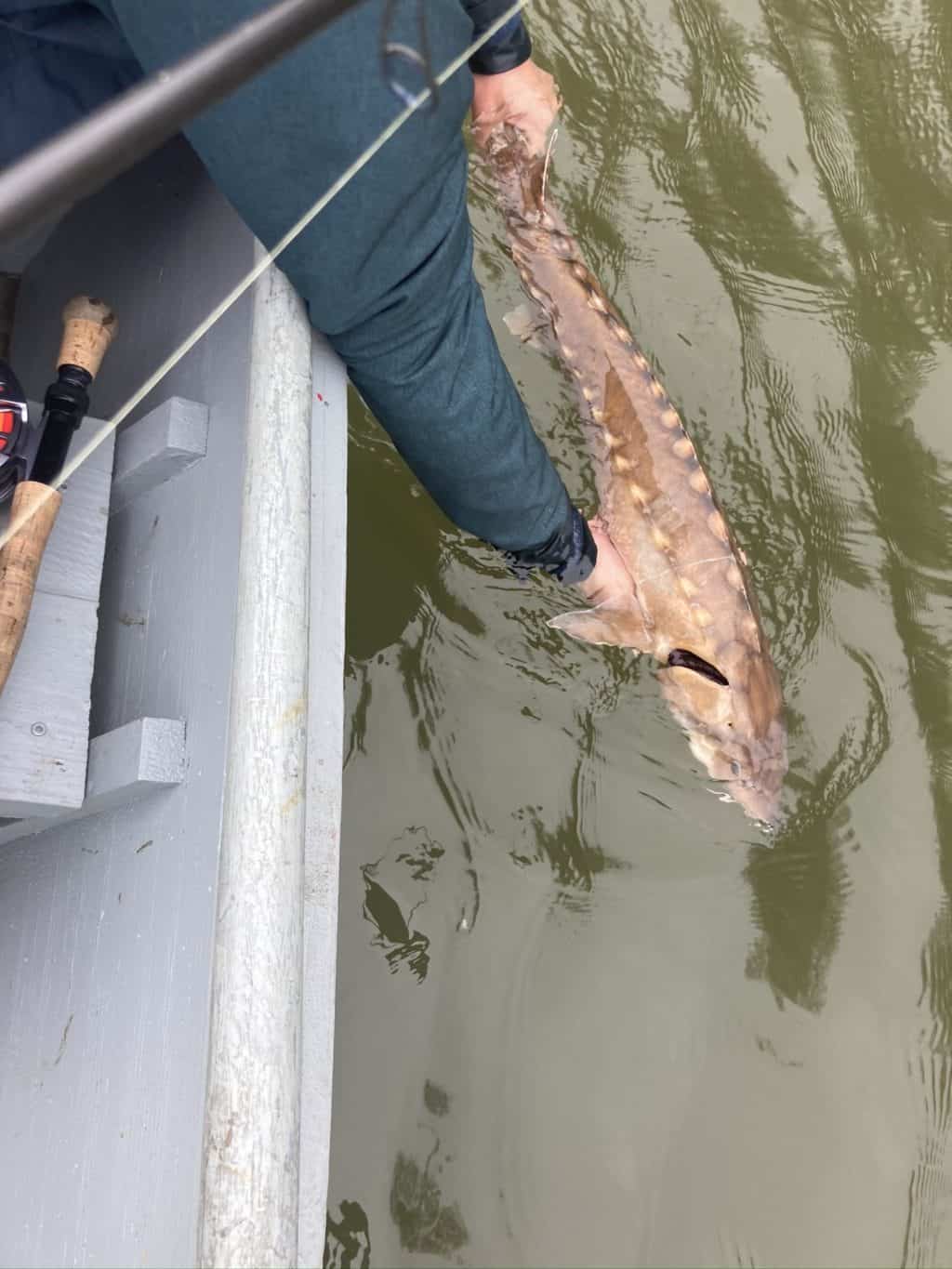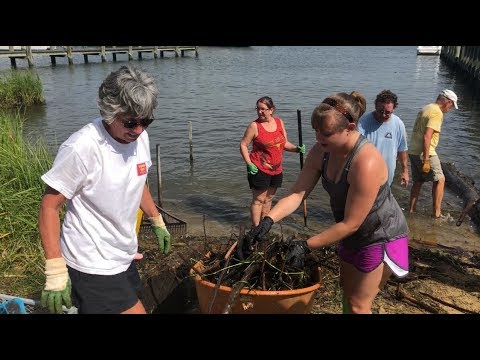A couple of anglers got an epic surprise while fishing the Potomac in one of the Fletcher’s Boathouse rowboats, near Chain Bridge.
Josh Cohn and Connor Lynch were out trying to catch catfish and rockfish, Cohn tells me, when instead they hooked a shortnose sturgeon—an endangered, prehistoric fish even more rare than the larger Atlantic sturgeon. Once the boat partners realized it was a sturgeon, they leaded and unhooked it without removing it from the water.
“I did my best to follow the same protocol that a guide I fished with in Montana did when we accidentally caught a bull trout,” Cohn explains, only taking photos because “otherwise no one would have believed it,” he says.
Cohn tells Bay Bulletin, “I knew it was the equivalent of stumbling across a baby panda in the woods and was pretty awestruck and focused on releasing it. Once it swam off we called all our friends yelling like crazy folks about how we found a sturgeon at Fletcher’s!”
Cohn and Lynch knew they’d made a rare catch, but just how rare? “It can’t be understated how rare of a sighting this is area waterways,” explains Potomac Conservancy spokesperson Melissa Diemand. “In a 2007 study, only two adult shortnose sturgeon were found in the Potomac River after three years of fish tagging.”
Mike Mangold from the U.S. Fish and Wildlife Service (USFWS) tells Bay Bulletin that during the 16-year (1996–2012) sturgeon reward program conducted with the Maryland Department of Natural Resources (DNR) in Maryland waters, just 12 shortnose sturgeon were documented in the river.
The shortnose has been on the endangered species list since 1967, but its population has been declining since the 19th century, when sturgeon became victims of the caviar industry. Later, their habitats and food sources were lost or compromised by industrial and agricultural runoff and dredging.
The shortnose sturgeon has five rows of spikes or “scutes” and grows up to 4.5 feet, weiging up to 50 pounds. They’re sometimes called dinosaur fish due to the spikes and their presence in the Chesapeake watershed (no matter how rare) since the time of the dinosaurs.
Female shortnoses can live up to 60 years. Because they reach breeding age slowly and do not spawn every year, it takes sturgeon a long time to recover from population declines, explains the Maryland Department of Natural Resources.
While there is no proof the shortnose sturgeon went to the area near Fletcher’s Boathouse to spawn, a female tagged by USFWS was documented traveling to the exact same area in April 2006 and again in April 2009. The Potomac Conservancy is excited by the possibility of a spawning population (no matter how small) in that section of the river.
“Sturgeon are a prehistoric fish that have been around for 120 million years, but pollution and overfishing nearly wiped them out. Decades of hard work to clean up the Potomac and Chesapeake Bay are paying off – and we’re seeing that with the return of native fish. We hope that through continued progress sturgeon will make a strong comeback too,” says Diemand.
Cohn, a conservation-minded angler, agrees: I think it signifies very clearly that the health of the river is improving and shows how quickly nature can begin to recover when given half a chance. The Potomac handed out tetanus to its swimmers half a century ago and now supports indicator species as rare as a shortnoe—it’s the clearest sign of hope I’ve seen in the 10 years I’ve been hanging around the Potomac.”
–Meg Walburn Viviano



